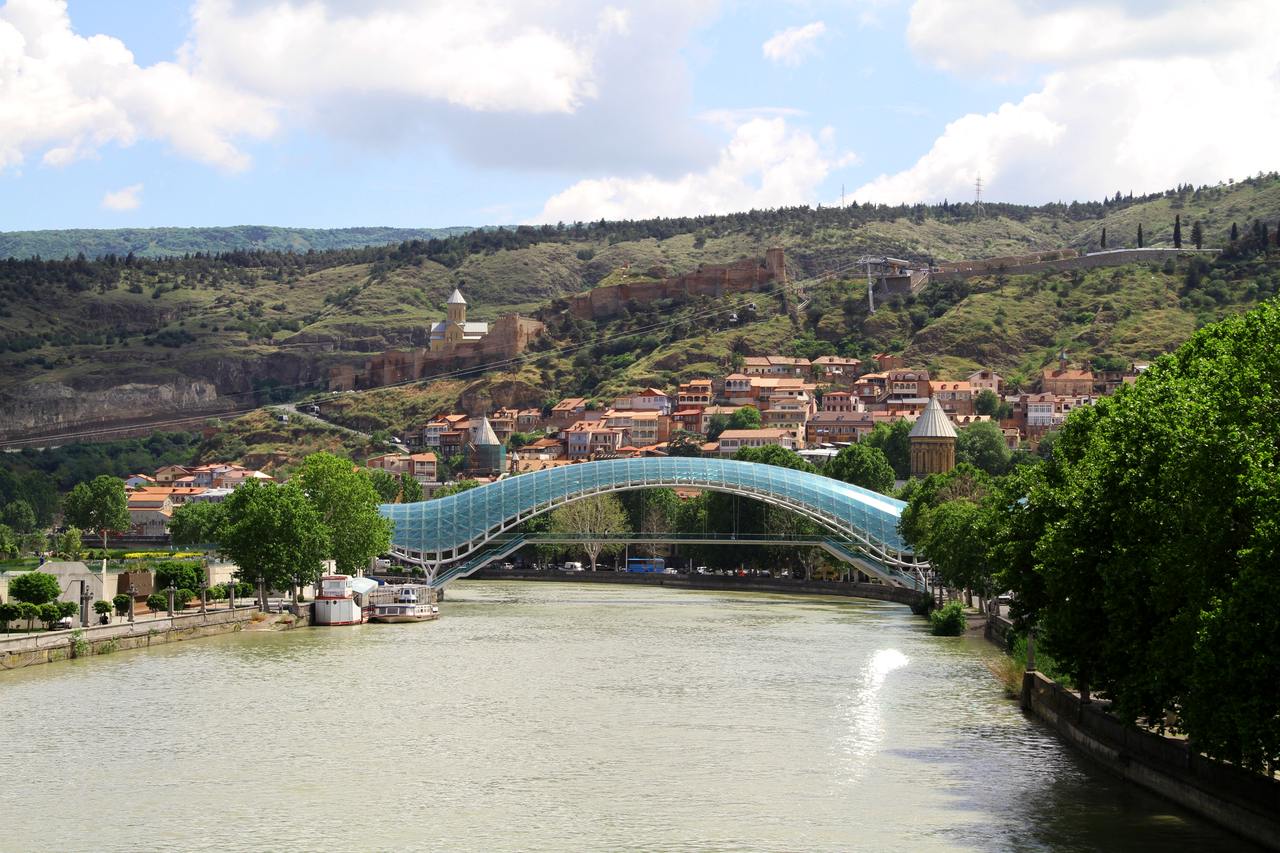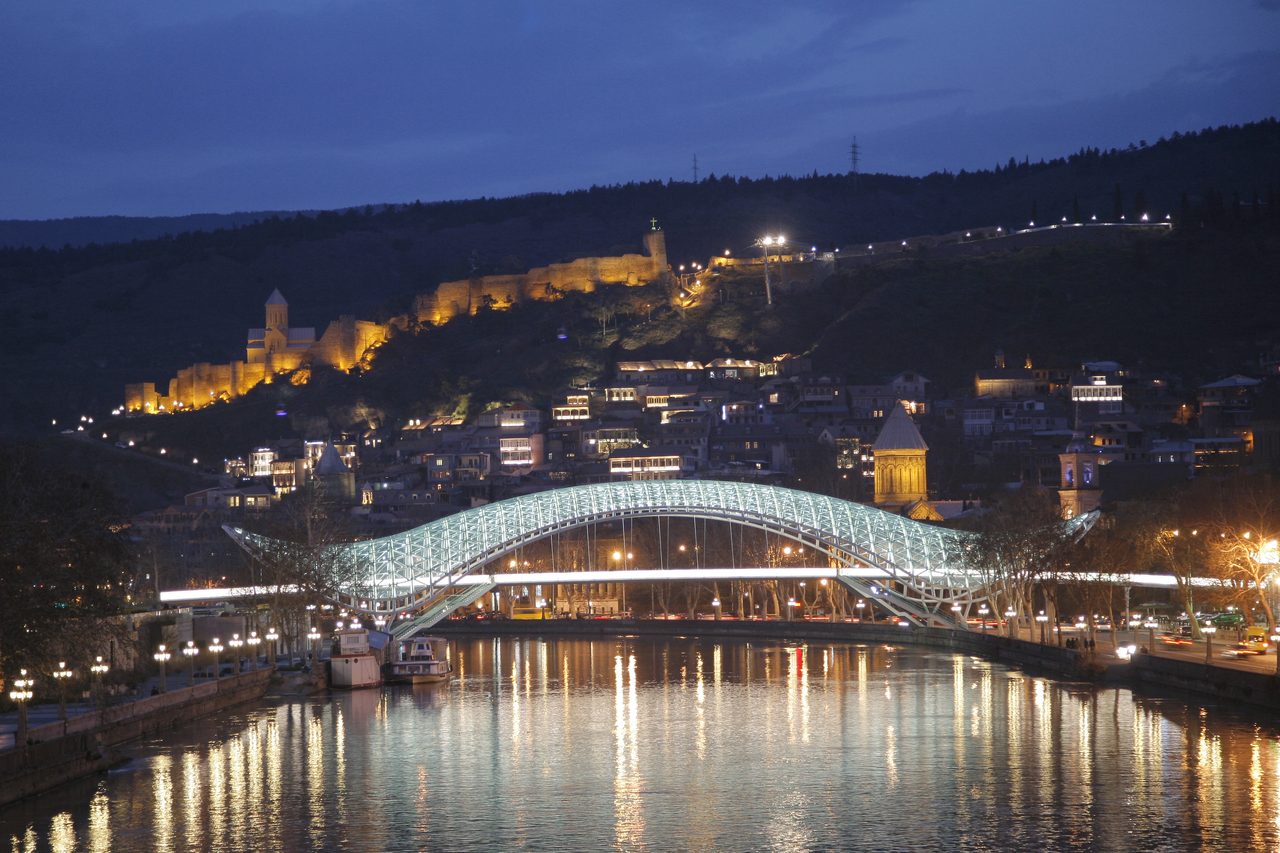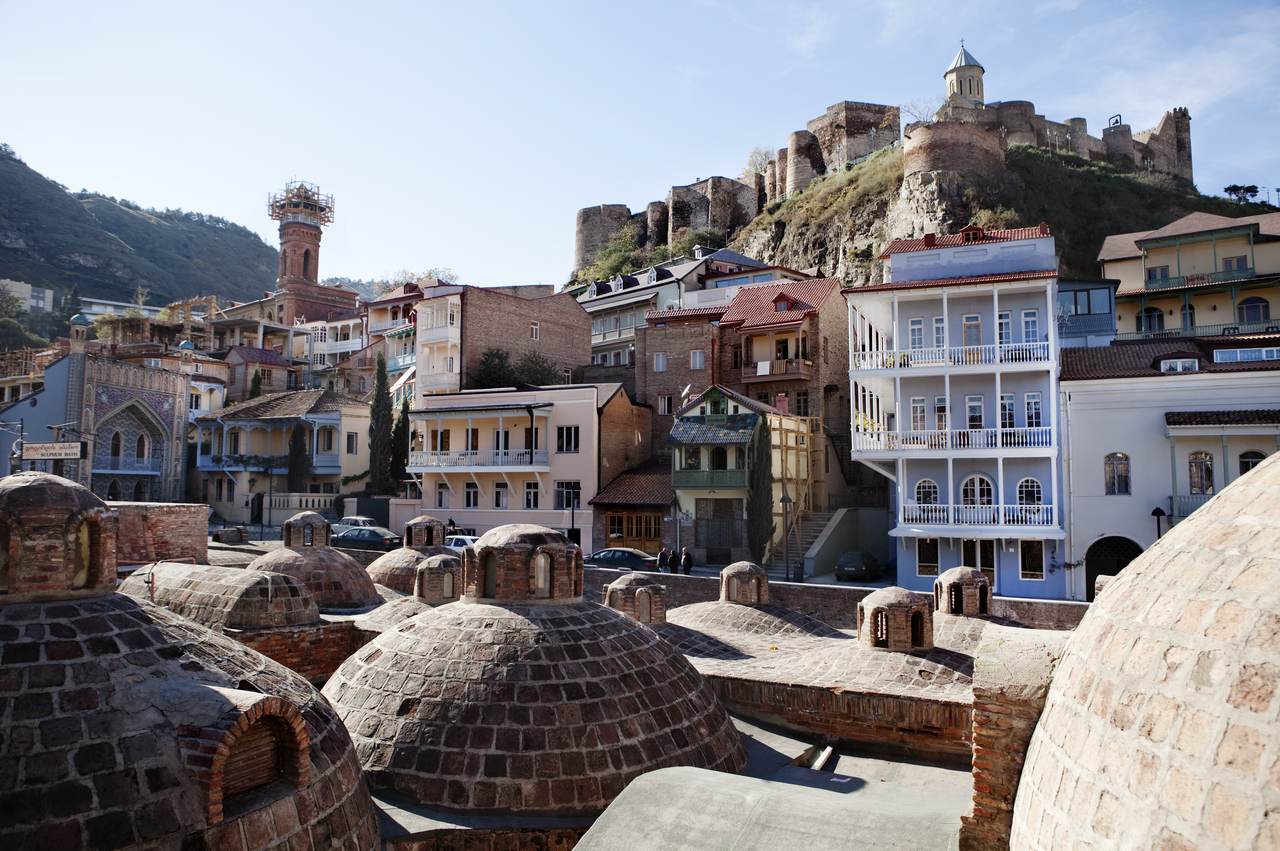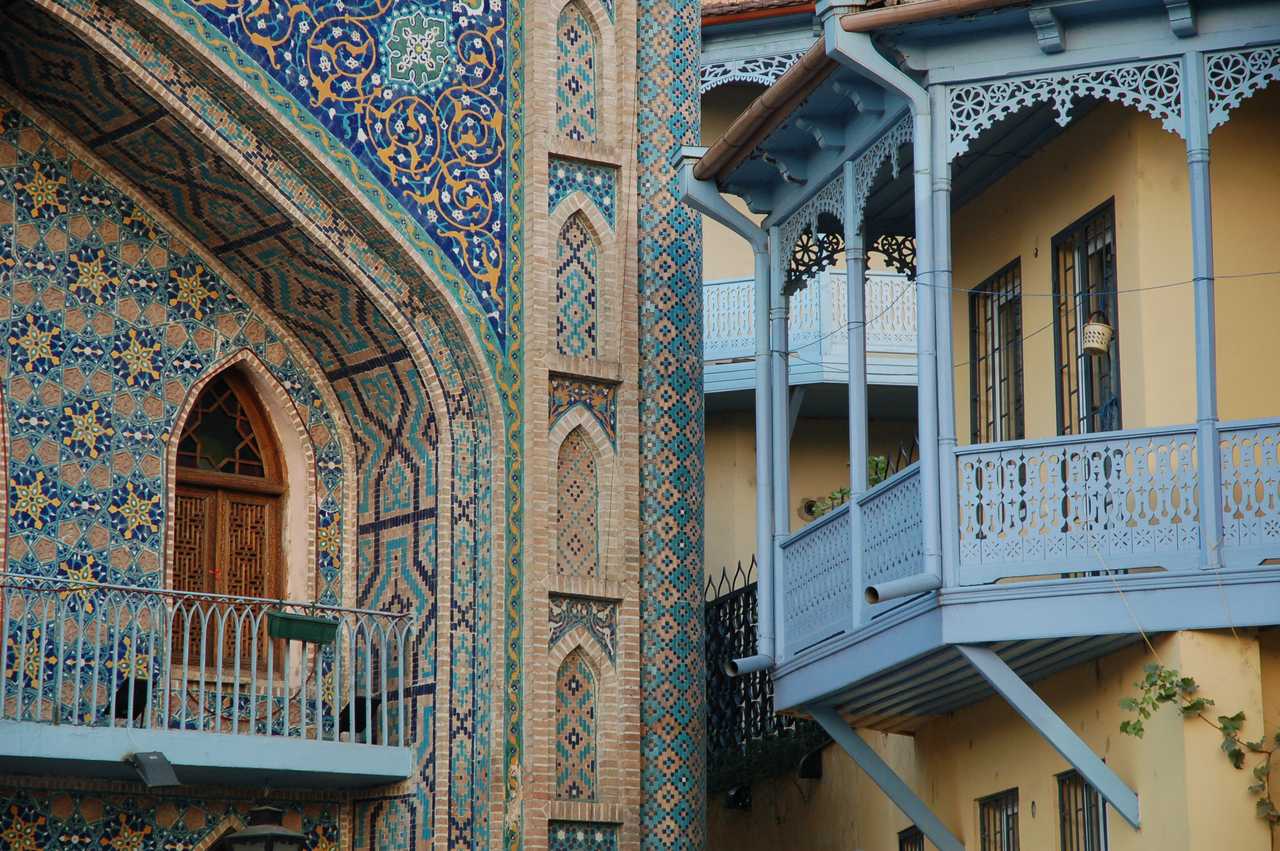As you enter Tbilisi from the west, the utterly captivating capital of Georgia, you will pass a statue of King David the Builder (David Aghamashenebeli) who reigned from 1089 until his death in 1125. He looks poised and gallant on his horse from his elevated perch on the motorway, beyond which the old Soviet style buildings give way to a more picturesque setting.
The statue is an important symbol of prosperity and strength as David – who incidentally gave his name to Kutsai airport (officially David Aghmashenebeli Airport) – successfully kept away unwanted visitors and heralded in the Georgian Golden Age.
It’s a great spot for him to witness the renewal of this beautiful, peaceful and inclusive city as tourism nudges in another Golden Age casting a spotlight on Tbilisi’s gorgeous terrain. From any perspective, this city is abundant with monuments, lush verdant hills, curvy river with sheer cliffs and attractive homes defined by their ornately carved wooden balconies.
The city makes for a wonderful short break. Here’s how to make the very best of Tbilisi in 24 hours.
Must Stay
Rooms Hotel is the hippiest joint in the city. Owned by a flamboyant casino owner you can expect artworks, unusual decor, moody lighting and some extravagant flourishes. Read the full review of Rooms Hotel.
TIP: For an even hippier experience at budget prices check out Fabrika hostel which was fashioned out of a former sewing factory. You can share hostel-style rooms from as low as £10 per person or upgrade for a little more. But the partying here goes on well into the night so you may not get much sleep. Read the full review of Fabrika Hostel.
Must check out the Old Town (Altstadt)
The old cobbled streets of the Old Town twist and turn churning out ramshackled yet colourful buildings alongside renovated brick-built homes with their iconic balconies. These are interwoven with classical Russian and Art Nouveau architecture and the visual effect is pleasing.
Freedom Square, looking grand with its neo-classical buildings, is where the statue of Lenin was symbolically torn down in 1991 to mark the end of Soviet Rule. Look up to see a glinting St George statue in gold at the top of a tall column that rises up from the roundabout. The city’s main street Rustaveli Avenue leads off from here. It has the Parliament, the Opera and Ballet Theatre and the National Museum along its stretch.
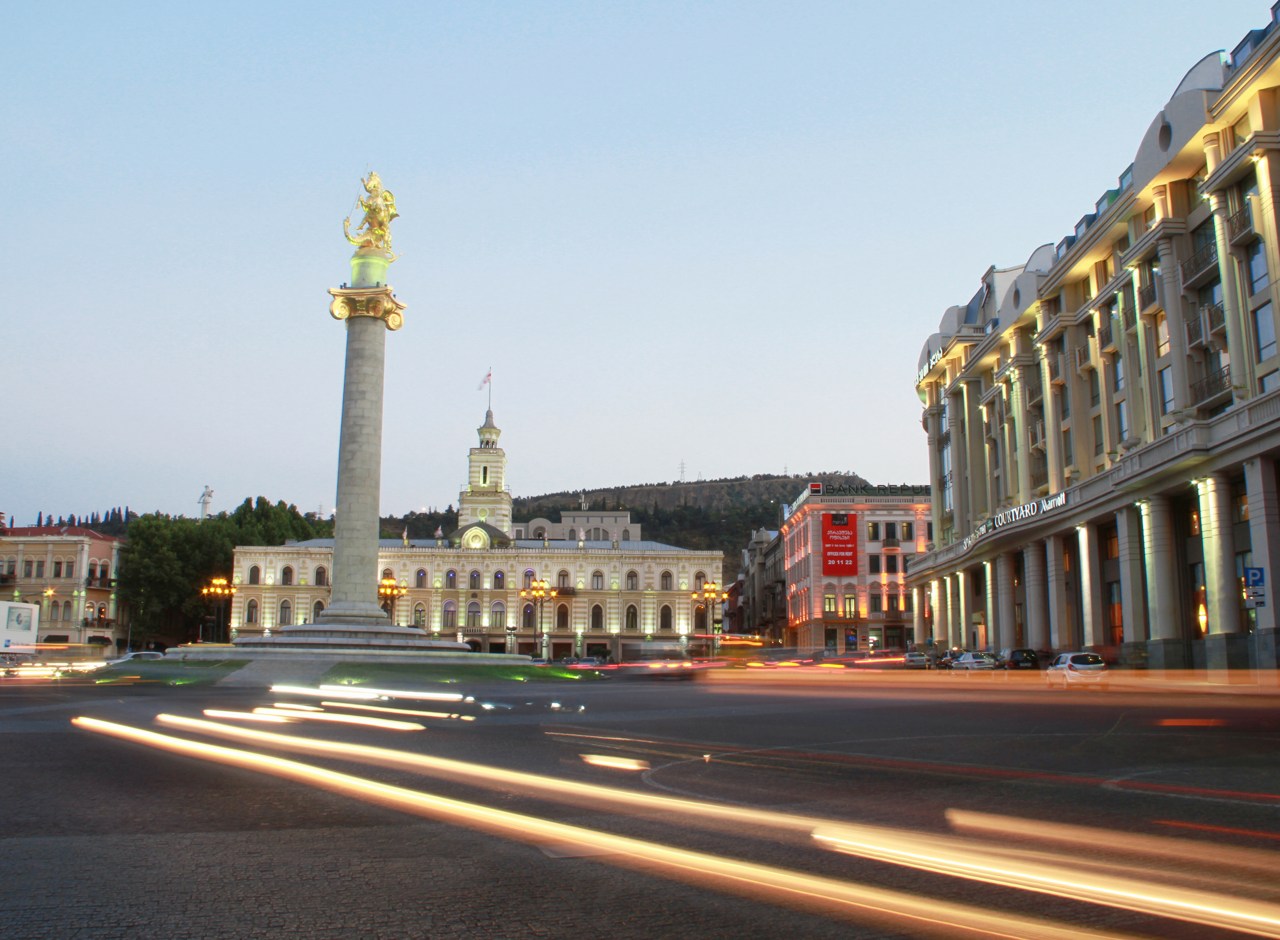
St George statue
The deeper into the centre you get the more narrow and twisty the roads become passing the only mosque in town where both Shiite and Sunni Muslims pray in gorgeous mosaic interiors; the 6th century Sioni Cathedral (named after Mount Zion in Jerusalem and rebuilt by David the Builder in 1112) and the Great Synagogue built 1895-1903 by Georgian Jews from Akhaltsikhe.
Incidentally, the gold-domed Cathedral that rises out of St Ilya Hill, on the left bank (the other side of the river) is the Sameba and is the third-tallest Eastern Orthodox cathedral in the world.
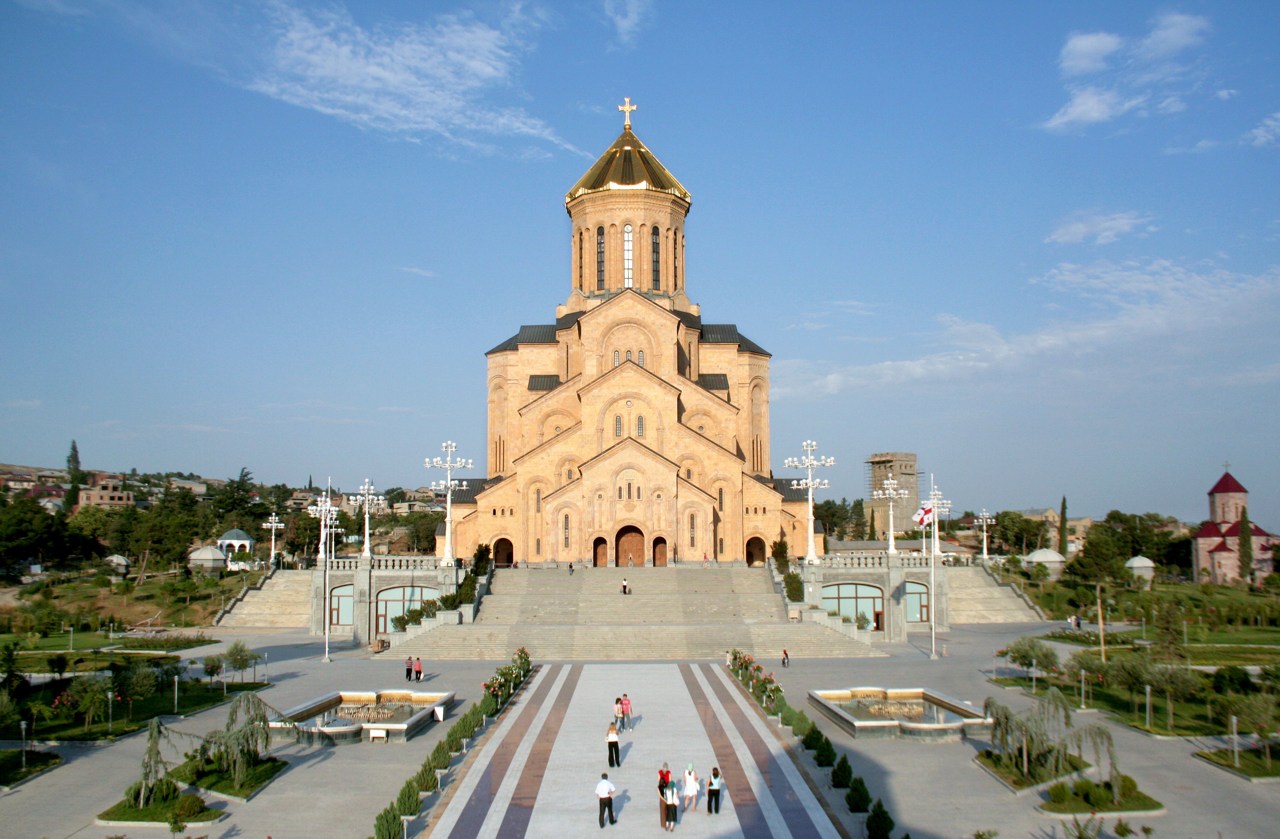
Sameba – Holy Trinity Cathedral of Tbilisi
There’s also a bizarre looking puppet theatre with a rather higgledy piggledy clock tower in the heart of the centre. It is part of Gabriadze puppet theatre and was built just a few years ago to look like it had come out of a story book.
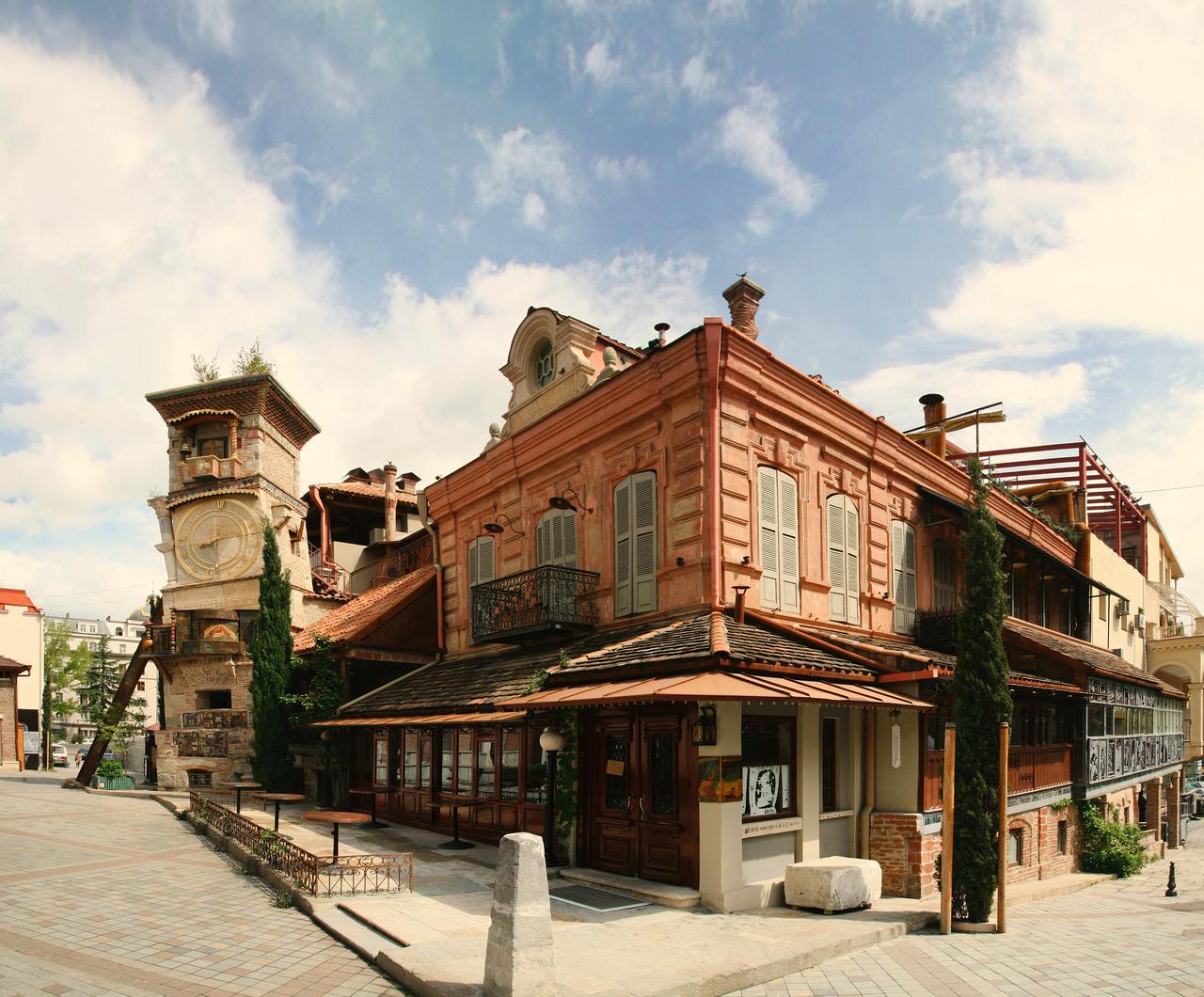
Clock and puppet theatre
On the hour, a puppet angel pops out of a door at its zenith to give the bell a tap with its hammer. Blink though and you will miss it.
Tip: Right in the heart of the city is a the Meidan Bazaar – the kind of place you stumble upon unless you are in the know. That’s because this hive of trade is in a tunnel under Gorgasali Square that connects sulphur baths to botanical gardens. This small stretch of tunnel has several little shops selling Georgian souvenirs, artwork, honey and wine.
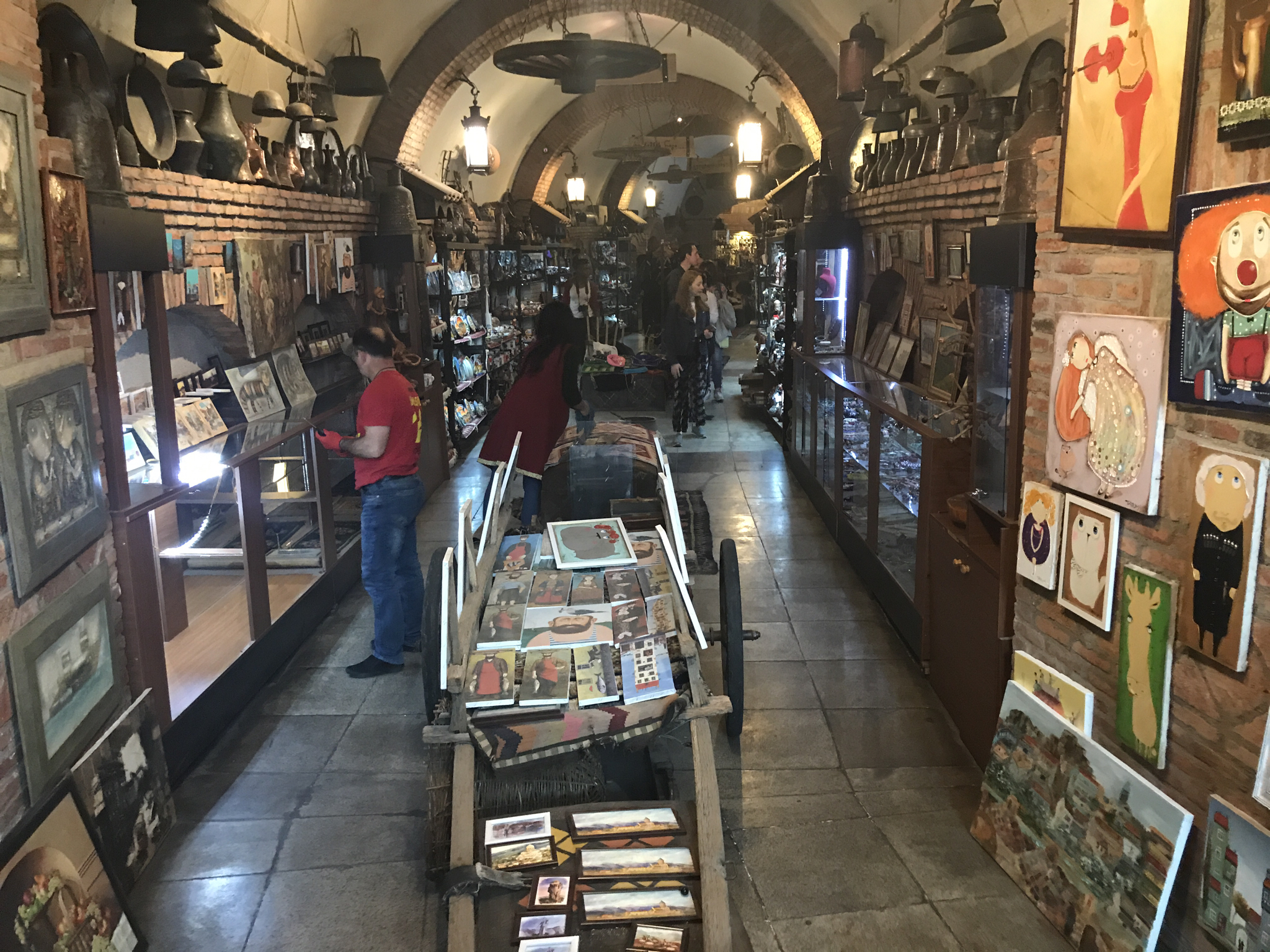
Meidan Bazaar, Tbilisi
Must see the views
Look up towards the peak of Sololaki Hill and you can see a 65-foot tall statue of the Mother of Georgia (Kartlis Deda) wearing the national Georgian dress. She was created in 1958 to celebrate the city’s 1500th birthday. She is holding wine in one hand for her friends and a sword in the other to deter foes. Trek up the hill or catch a cable car (cost: 5 LARI) to join her and enjoy a panoramic view over the city.
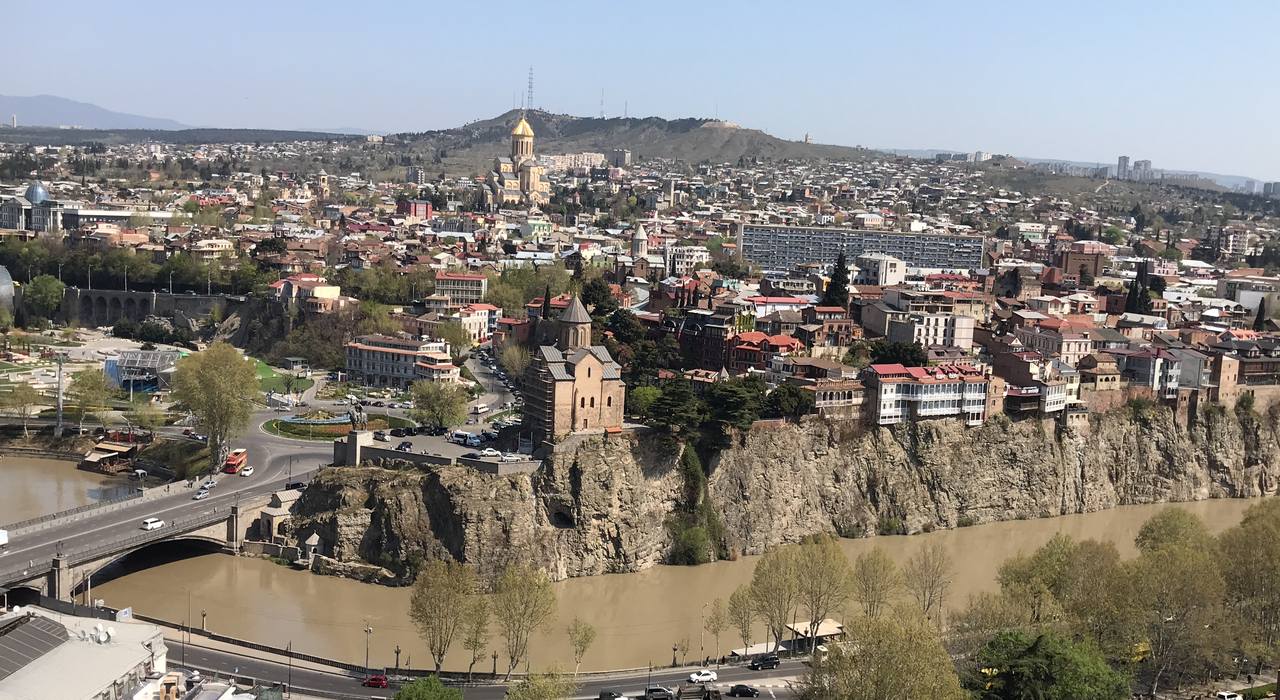
Tbilisi from Sololaki Hill – you can see the Mtkvari (Kura) river with its sheer cliffs
But there’s more because on the other side of the ridge there is a vista over 97 hectare botanical gardens.
There are more views to be had from the Peace Bridge. This stunning modern bow shaped bridge – a little piece of eye candy in itself – is the masterpiece of architect Michele de Lucchi. It is made of steel and glass illuminated with numerous LEDs. It’s lovely during the day and a head turner at night.
It crosses 150 metres (490 ft) over the Mtkvari (Kura) River and from here you can see the Metekhi Church, the statue of the city’s founder Vakhtang Gorgasali that stands in front of it, and the Narikala Fortress which unfolds on a hill between the sulphur baths and the botanical gardens.
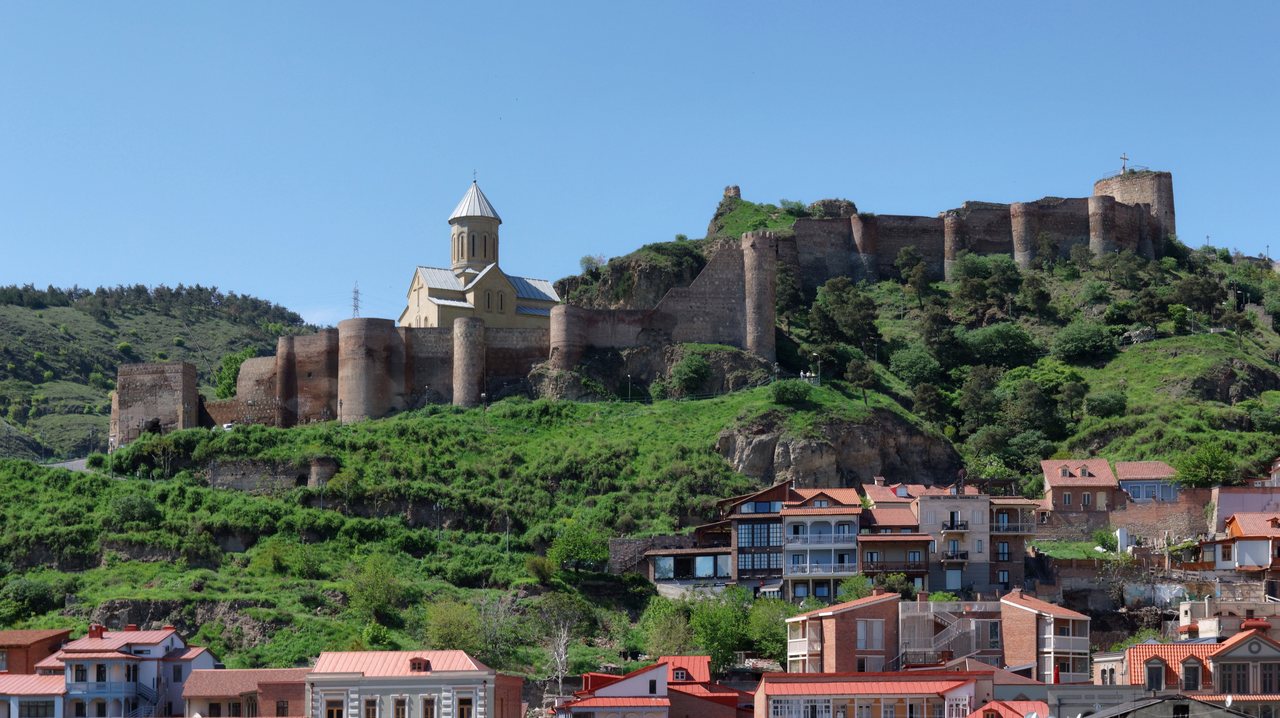
Narikala Fortress, Tbilisi
Must visit a spa
The Abanotubani District is where the bathhouses and sulphur spas are and you can see the 17th century domes that speak of underground baths. It’s a 2,000 year old heritage that grew up around the hot, healing waters of Tbilisi. Turns out that the Romans also bathed here as far back as 1st century AD.
There were 60 spas at one time, but today only five are functional. Even if you don’t partake, be sure to seek out Bathhouse Number 5 whose exterior walls are decorated with exquisite mosaic.
Tip: If you continue walking away from the river towards Leghvtakhevi the path will eventually find an eye-widening waterfall almost hidden away.
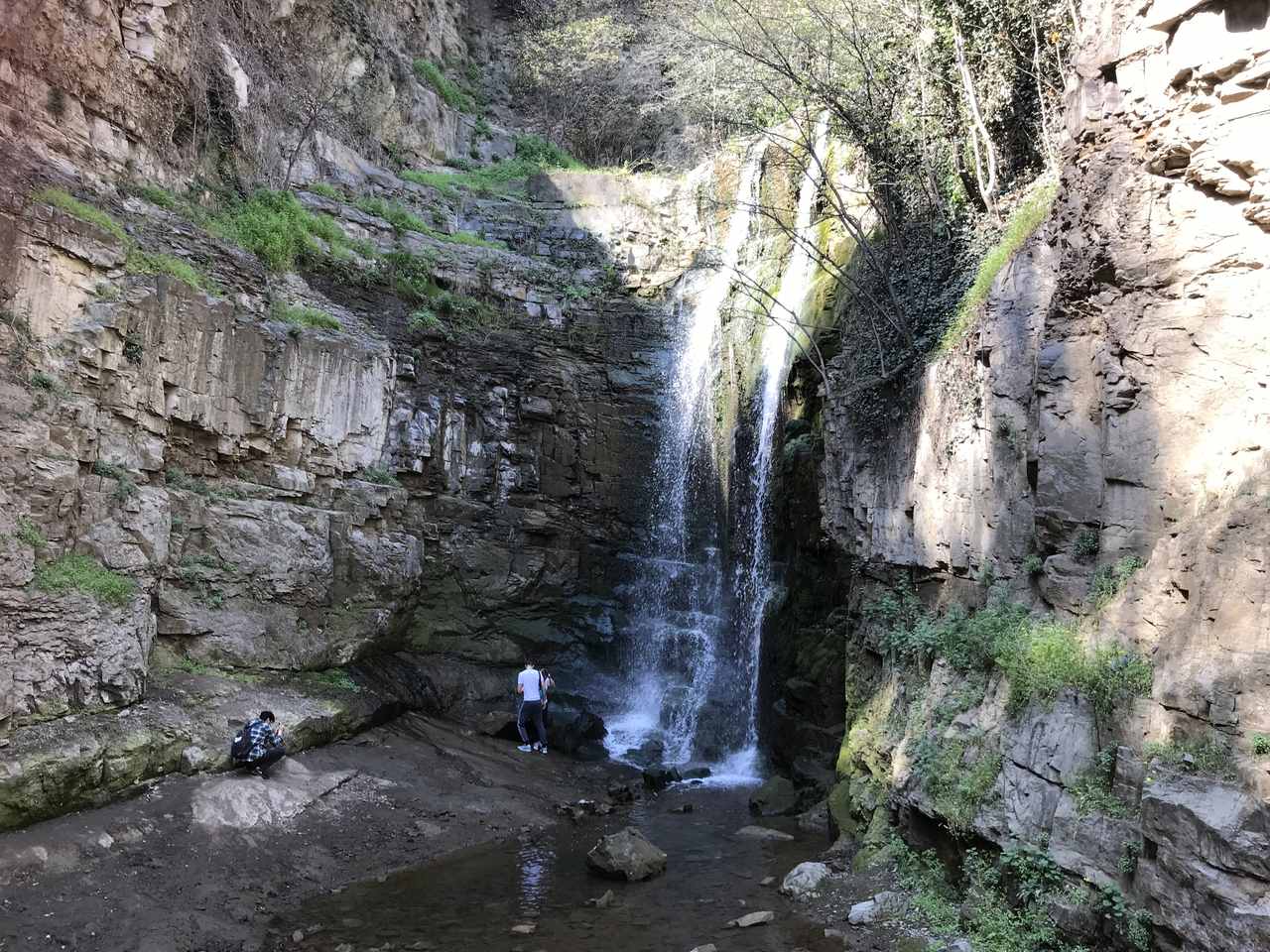
Waterfall
Must Eat
Unusually decorated in Asian and Persian style Cafe Leila has a lovely location next to the clock tower and is a great place to have lunch – especially for vegetarians. Eat in or out, this pescetarian restaurant offers vegetarian versions of Kharcho which is traditionally a beef soup but made here with mushrooms and blackberry sauce, served with mchadi (corn bread) on the side. Of course, staples such as Khachapuri, a Georgian cheese bread served with an egg, is done particularly well.

Khachapuri c. Анастасия Кузнецова from Pixabay
Also try the soko ketze sulgunit (mushroom on a clay plate with Sulguni cheese) too. The homemade lemonade is particularly refreshing.
As a dessert go for Churchkella. This is a sweet made from walnuts and grapes. The walnuts are threaded onto a string and this is dipped into hot grape juice thickened with flour and left to hang dry for a couple of weeks to form a candle-shaped sweet. Sometimes chocolate, almonds and even raisins are woven into this. You will find this for sale everywhere and it makes a great present for those back home.
ALSO READ: Georgia: Birthplace of Wine
Must visit the National Museum
The National Museum on Rustaveli Avenue has a magnificent display ancient objects and an array of splendid gold jewellery from pre-Christian times that would not look out of place at Tiffanys. On the first floor is a ghoulish collection of skulls tagged Homo Neanderthals, some dating back 70,0000 years.
Perhaps the most poignant section is to be found upstairs. An exhibition on Soviet rule in Georgia from 1921-91 has moody lighting and a layout like a cinema set.
It’s open 10am-6pm, closed Mondays. Entry 3-7 GEL.
Must detour to Uplistsikhe rock town
It will take around 90 minutes to drive to the rock town of Uplistsikhe aka “the lord’s forest”. But it is certainly worth the detour to visit this simply incredible town of rocks and caves. They were inhabited between the 6th century BC and 1st century AD by 20,000 people at its peak. It’s located by the Mtkvari River, and from the top, you get an eyeful of the Mtkvari valley. You’ll need sturdy shoes to navigate its ups and down and twisty rock formations but you’ll easily spot the wine cellar, pre-Christian Kartli temples that paid homage to the sun goddess, the conference hall and even the tiny underground prisons topped with grills. People would literally be able to walk over them.
Fact file
GETTING THERE: Wizz Air flies from Luton to Kutaisi, 150 miles north-west of Tbilisi, from £70 return. Find your flight with Skyscanner
<script src=”https://widgets.skyscanner.net/widget-server/js/loader.js” async=””></script>
You might also like: <a href=”https://www.thetravelmagazine.net/what-is-there-to-do-and-see-in-georgia/” target=”_blank” rel=”noopener”>What is there to see and do in Georgia?</a>

